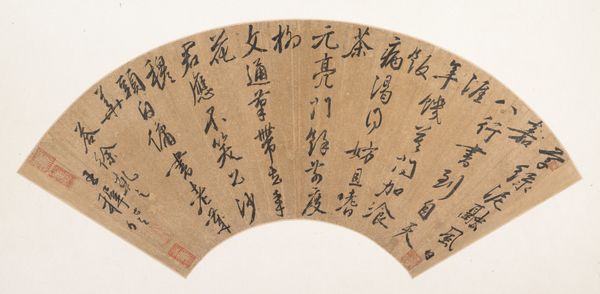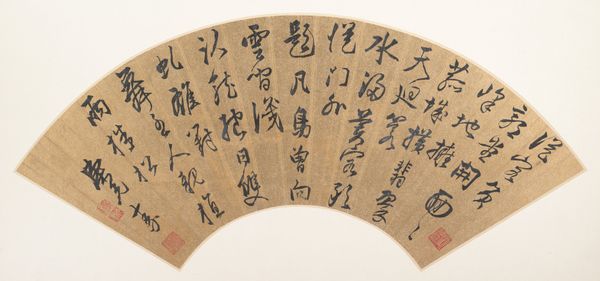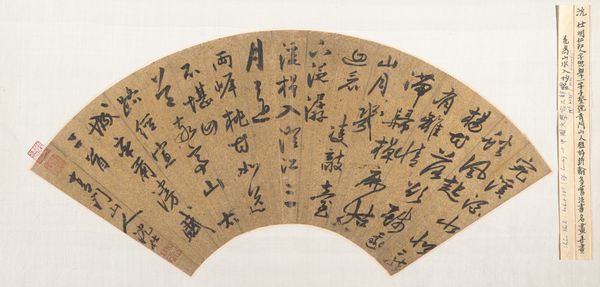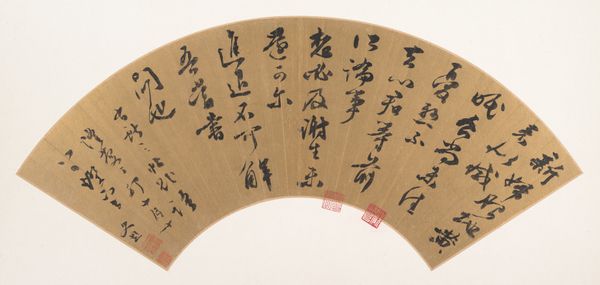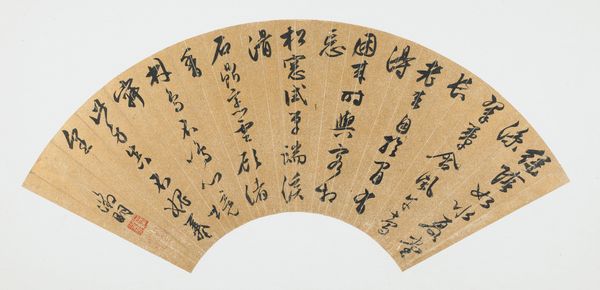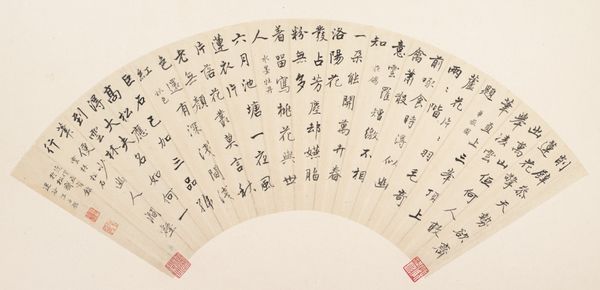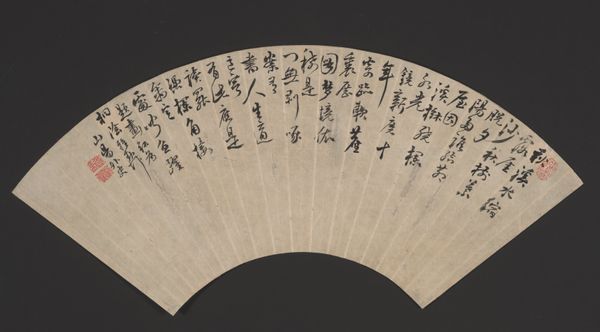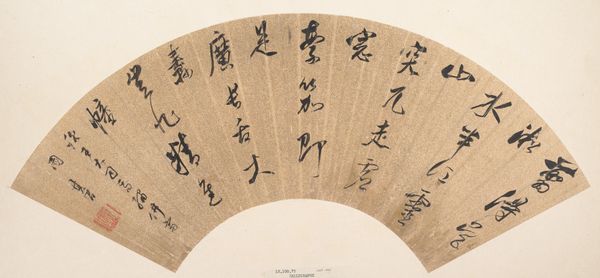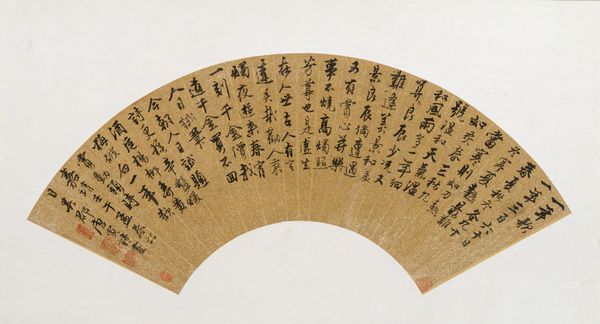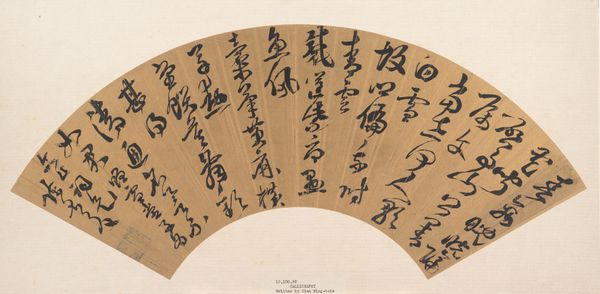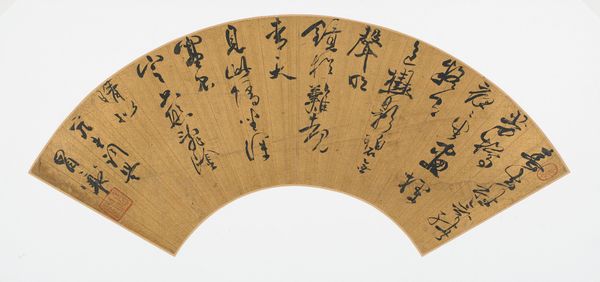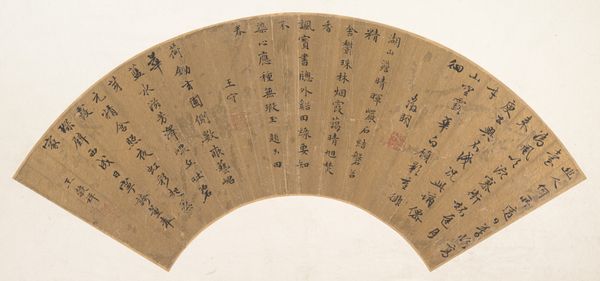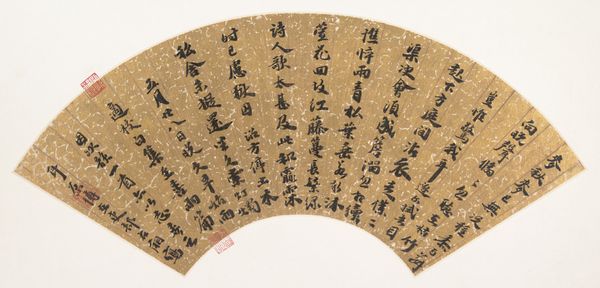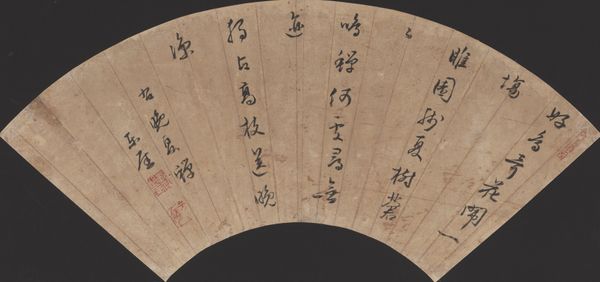
drawing, paper, ink
#
drawing
#
hand-lettering
#
asian-art
#
hand lettering
#
paper
#
22_ming-dynasty-1368-1644
#
ink
#
hand drawn
#
calligraphic
#
calligraphy
Dimensions: 6 5/16 x 20 5/8 in. (16 x 52.4 cm)
Copyright: Public Domain
Editor: This lovely fan, titled "Poem", dates back to the Ming Dynasty and is attributed to Zou Zhilin. It's created with ink on paper and currently resides at The Met. It has a beautiful, elegant calligraphy, that gives the impression of wind moving through the leaves, and there is a lot of text... What do you make of this work? Curator: The beauty lies, as you say, in its apparent simplicity, which masks the complex social and cultural functions it would have served. As a historian, I'm interested in the artwork's circulation, reception, and interpretation. Note how the fan shape itself dictates the layout, its presentation a public display of literati sophistication and cultured refinement. The artist isn't merely showing their skills; it's about communicating status within their social circles. Editor: Status? How would the hand-lettering on a fan indicate the owner’s position in society? Curator: Consider the ownership, for example. Displaying knowledge of calligraphy signified entry into elite circles and the art of sophisticated socializing and power dynamics of Ming Dynasty society. Editor: Fascinating! So, it's about showing not just skill, but belonging. And I suppose being displayed at The Met speaks volumes now, doesn't it? How has the passage of time impacted its purpose as an artwork? Curator: Exactly. Think about how it ended up in a museum, how its purpose changed to educational and aesthetic enjoyment to being a symbolic representation of a historical and cultural identity, and even as cultural artifact that we now reinterpret and interact with. The museum becomes a crucial part of the artwork's story, extending its reach. Editor: That makes a lot of sense. I didn't really consider its journey beyond its creation, especially now as a museum piece. I’ll have to consider context beyond aesthetics from now on. Curator: And thinking about art's public life keeps it perpetually dynamic.
Comments
No comments
Be the first to comment and join the conversation on the ultimate creative platform.
